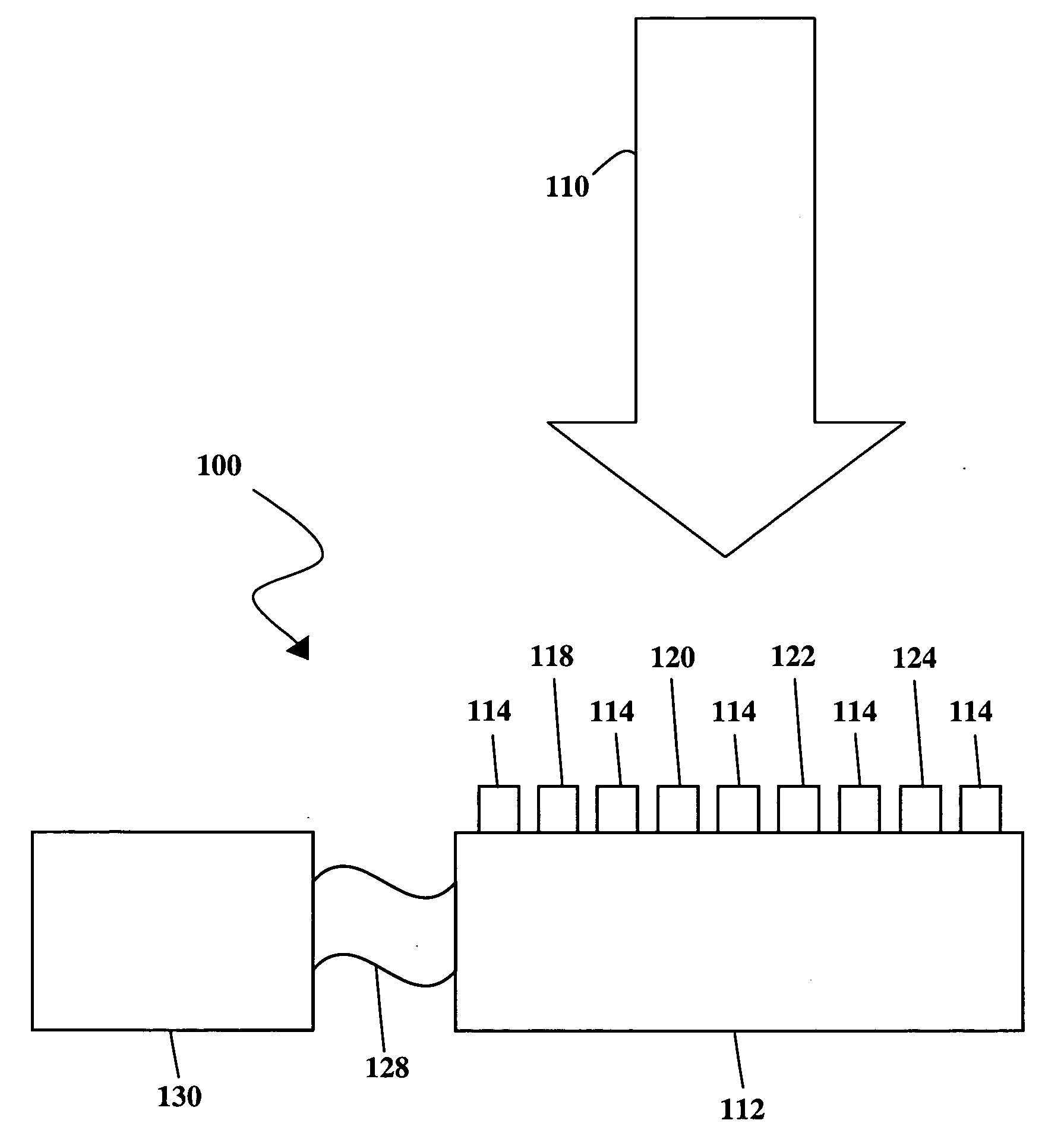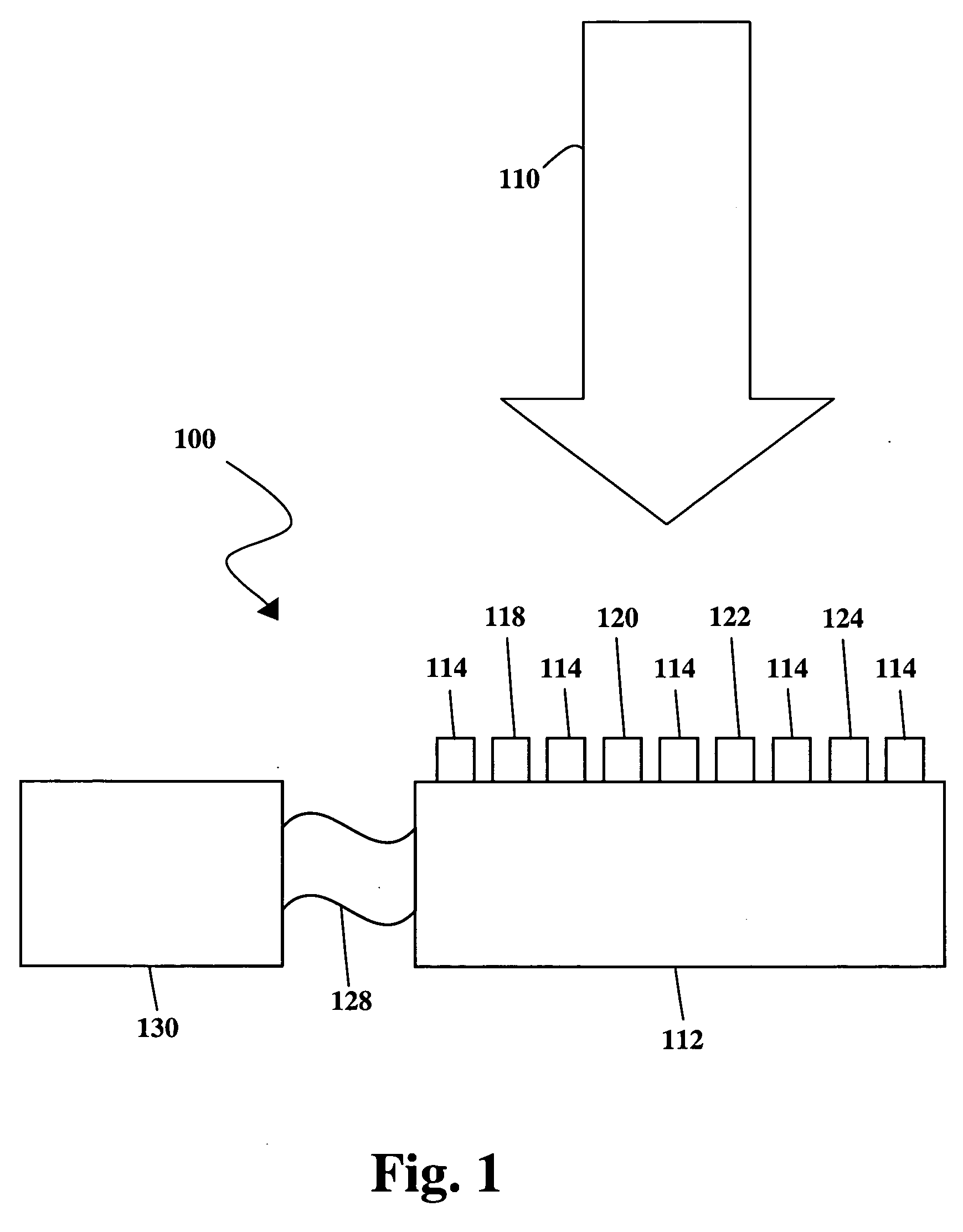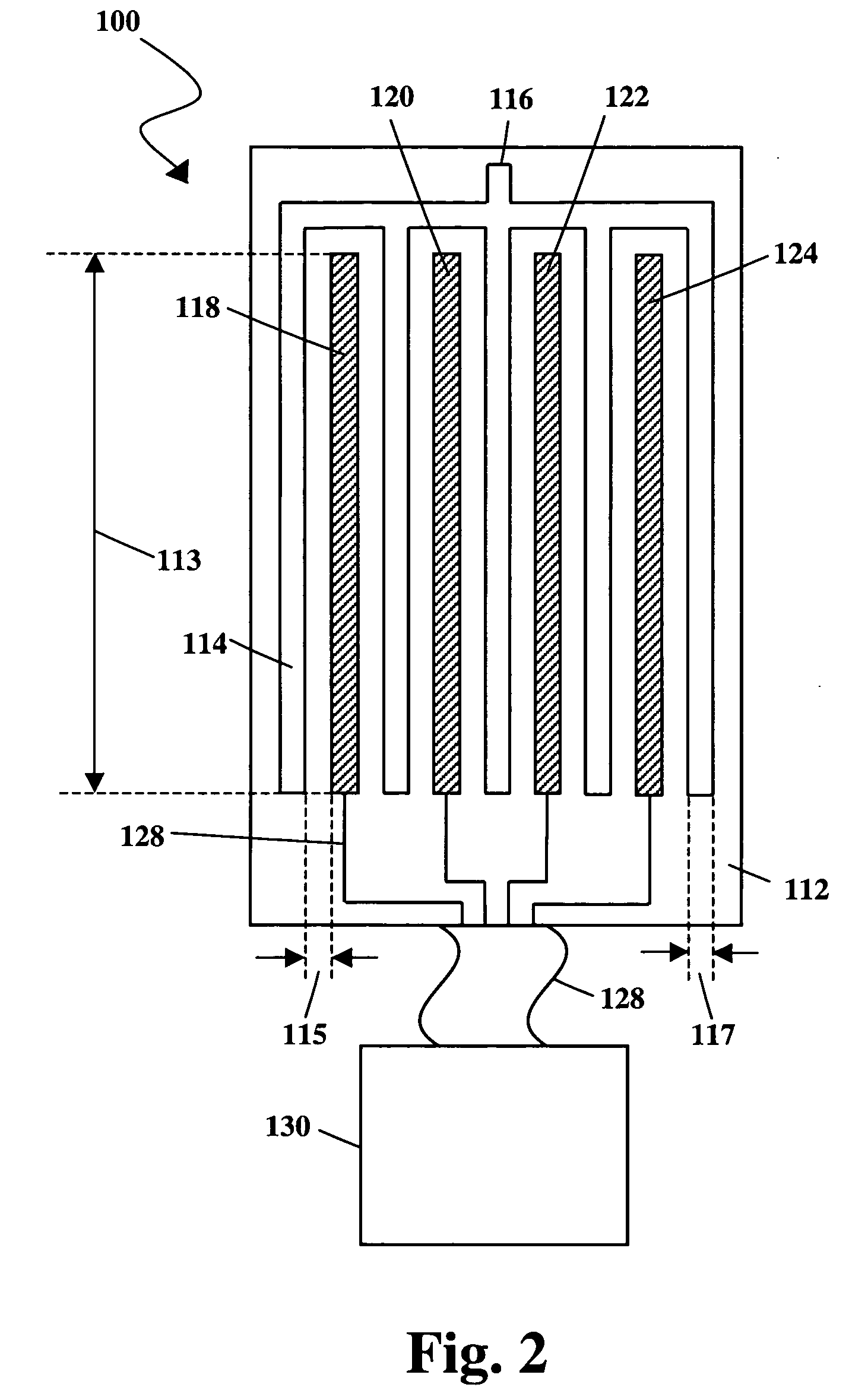Apparatus and method for an electronically tuned, wavelength-dependent optical detector
an optical detector and wavelength-dependent technology, applied in the direction of optical radiation measurement, instruments, spectrometry/spectrophotometry/monochromators, etc., can solve the problem of inability to dynamically tune the wavelength-dependent relationship, the speed with which the selected wavelength can be changed in these approaches is limited, and the msm device cannot be dynamically tuned
- Summary
- Abstract
- Description
- Claims
- Application Information
AI Technical Summary
Benefits of technology
Problems solved by technology
Method used
Image
Examples
Embodiment Construction
and the preferred and alternative embodiments is presented below in reference to the attached drawing figures.
BRIEF DESCRIPTION OF THE FIGURES
[0020]FIG. 1 is a diagram illustrating a side view of an apparatus according to the invention.
[0021]FIG. 2 is a diagram illustrating a top view of an apparatus according to the invention.
[0022]FIG. 3 is a diagram illustrating a top view of another embodiment of an apparatus according to the invention.
[0023]FIG. 4 is a diagram illustrating a side view of another embodiment of an apparatus according to the invention.
[0024]FIG. 5 is a diagram illustrating an optical system incorporating an apparatus according to the invention.
[0025]FIG. 6 is a diagram illustrating an experimental set-up.
[0026]FIG. 7 is a diagram showing the measured photocurrent as a function of wavelength.
[0027]FIG. 8 is a diagram illustrating a biasing configuration relative to the fringes of an interference pattern for an apparatus according to the invention.
[0028]FIG...
PUM
 Login to View More
Login to View More Abstract
Description
Claims
Application Information
 Login to View More
Login to View More - R&D
- Intellectual Property
- Life Sciences
- Materials
- Tech Scout
- Unparalleled Data Quality
- Higher Quality Content
- 60% Fewer Hallucinations
Browse by: Latest US Patents, China's latest patents, Technical Efficacy Thesaurus, Application Domain, Technology Topic, Popular Technical Reports.
© 2025 PatSnap. All rights reserved.Legal|Privacy policy|Modern Slavery Act Transparency Statement|Sitemap|About US| Contact US: help@patsnap.com



